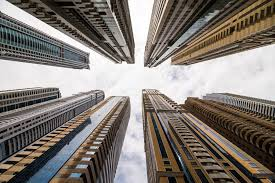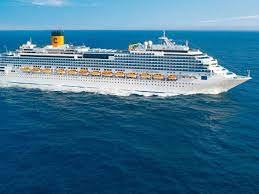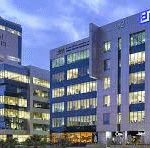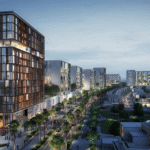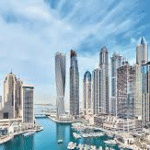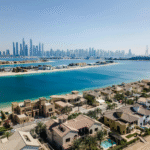Now Reading: Dubai Real Estate 2025: Navigating the Predicted 15% Price Correction
-
01
Dubai Real Estate 2025: Navigating the Predicted 15% Price Correction
Dubai Real Estate 2025: Navigating the Predicted 15% Price Correction
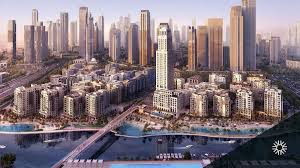
Table of Contents
Dubai’s real estate market in 2025 is poised for a nuanced transition, with Fitch Ratings forecasting a potential 15% price correction in the second half of 2025 and into 2026, following a 60% price surge from 2021 to Q1 2024. This correction is primarily driven by a significant increase in housing supply (approximately 180 million new units by 2026) outpacing population growth (projected at 5% annually). Despite this, Dubai’s robust economic growth (4.5–6.2% GDP forecast), investor-friendly policies, and sustainability focus ensure long-term stability. This analysis examines the correction’s drivers, key investment opportunities, risks, and sustainable strategies, incorporating insights from Sharjah’s sustainable developments as a comparative model, to guide investors navigate Dubai’s dynamic market in 2025.
1. Understanding the 15% Price Correction

Drivers of the Correction
- Supply Surge: An estimated 180,000 new residential units are slated for delivery between 2025 and 2026, with 76,000 units in 2025 alone, an 80% increase from 2024’s 27,000 units. This follows strong pre-sales in 2022–2023, particularly in off-plan properties, which accounted for 60% of 2023 sales.
- Population vs. Supply Mismatch: Dubai’s population grew 5% in 2024 to 3.8 million, with projections to reach 4 million by 2025. However, the supply influx (120,000 units in 2026) is expected to outstrip demand, potentially saturating the market.
- Rental Growth Slowdown: Rental growth declined to 7.4% in Q1 2025 from 19% in 2024, reflecting early signs of supply pressure. Short-term rentals are projected to rise 18%, and long-term leases by 13%, but increased inventory may cap further hikes.
- Global and Regional Factors: Rising interest rates globally could deter borrowing, though Dubai’s low mortgage reliance (most transactions are cash-based) mitigates this. Geopolitical tensions in the Middle East pose moderate risks, potentially impacting investor confidence if escalated.
Market Context
- Recent Performance: Dubai’s market saw record-breaking growth, with 180,987 transactions in 2024 (36.5% YoY increase) valued at AED 441.5 billion. Residential sales prices rose 20% in 2024 to AED 1,597 per square foot, with villas outperforming apartments.
- Resilience: Despite the correction forecast, experts like Maurice Gravier (Emirates NBD) emphasize long-term resilience due to economic diversification into tourism, tech, and logistics, supported by a 6.2% GDP growth projection for 2025.
- No Crash Expected: Fitch Ratings and Barclays Private Bank note that a major crash is unlikely, given Dubai’s safe-haven status, zero property taxes, and sustained expatriate inflows.
- Sentiment on X: Posts on X reflect mixed views, with some users like @AntonKreil citing oversupply and declining lease renewals as correction signals, while others like @GulfNewsBiz highlight UAE banks’ and developers’ preparedness, suggesting a soft landing.
Comparison with Sharjah
- Sharjah’s sustainable projects (e.g., Sharjah Sustainable City, Aljada) face less supply pressure due to a smaller market (AED 40 billion in 2024 transactions vs. Dubai’s AED 441.5 billion). Sharjah’s focus on affordable, eco-friendly developments (6-8% yields, 8-12% appreciation) offers stability, potentially shielding it from Dubai’s correction. However, Sharjah’s limited freehold zones and moderate liquidity contrast with Dubai’s broader investor appeal.
2. Key Investment Opportunities in 2025

Despite the correction risk, Dubai’s market offers strategic opportunities across residential, commercial, and sustainable segments, particularly in affordable and mid-market properties, which are less exposed to luxury segment volatility.
Residential Investments
- Affordable and Mid-Market Housing:
- Areas: Jumeirah Village Circle (JVC), Dubai South, Al Furjan, and International City. JVC saw a 7.25% price-per-square-foot increase in 2024 (AED 896), while International City surged 15.5% (AED 583).
- Price Range: Apartments from AED 500,000–1.4 million, townhouses from AED 1–2 million.
- ROI: 7–9% rental yields, 5–8% capital appreciation, driven by expatriate demand and population growth.
- Why Invest?: Developers are shifting focus to affordable segments (76,000 units in 2025), reducing luxury project share, aligning with mid-income buyer demand.
- Off-Plan Properties:
- Projects: Emaar South, The Valley, DAMAC Riverside, Sobha Elwood. Off-plan sales reached AED 53.9 billion in Q1 2025, with flexible payment plans (e.g., 5–10% down payment, 25/75 plans).
- ROI: 8–10% appreciation by completion (2026–2027), with lower entry costs (e.g., AED 639,000 for Aljada apartments in Sharjah as a benchmark).
- Why Invest?: Off-plan properties hedge against correction risks, locking in current prices before potential declines.
Commercial Investments
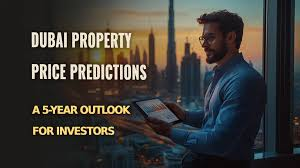
- Office Spaces:
- Areas: Business Bay, DIFC. Prime office rents rose 17% in 2024, with 12% growth projected for 2025, driven by multinational relocations.
- ROI: 5–7% yields, 5–8% appreciation, supported by Dubai’s business hub status.
- Why Invest?: Sustained corporate demand mitigates correction impact, with stable tenancy in prime locations.
- Retail and Warehousing:
- Areas: Dubai South (logistics hub), community retail hubs per Dubai 2040 Urban Master Plan. Retail expenditure is projected to grow 6% from 2025–2027.
- ROI: 6–8% yields, driven by e-commerce and tourism (18.7 million visitors in 2024).
- Why Invest?: Diversification into retail and industrial properties taps into Dubai’s logistics and consumer growth, less affected by residential oversupply.
Sustainable Developments (Inspired by Sharjah)
- Trends: Sustainable properties are projected to account for 35% of Dubai’s transactions in 2025, up from 15% in 2020, aligning with Dubai’s Net-Zero 2050 commitment.
- Projects:
- Emaar The Oasis: High-class homes with greywater recycling, solar integration, and smart irrigation, starting at AED 2 million.
- DAMAC Lagoons: Waterfront villas with energy-efficient designs, from AED 1.5 million, offering 6–8% yields.
- Features: Green-certified buildings, EV charging stations, and 20% reductions in water/electricity use, similar to Sharjah Sustainable City’s 50% utility savings.
- ROI: 6–8% yields, 8–10% appreciation, driven by eco-conscious buyer demand.
- Why Invest?: Sustainability enhances tenant appeal and resale value, mirroring Sharjah’s success (e.g., Sharjah Sustainable City’s LEED alignment), and hedges against market volatility.
Luxury Segment (Cautious Approach)
- Areas: Palm Jumeirah, Downtown Dubai, Emirates Hills. Luxury sales (AED 15 million+) reached 948 transactions in 2024, with 20% price increases in prime areas.
- ROI: 5–7% yields, 8–10% appreciation, but higher correction risk due to supply influx.
- Why Cautious?: Luxury properties face greater exposure to price drops, as developers pivot to affordable segments. Invest selectively in branded residences (e.g., DAMAC Bay 1 by Cavalli).
3. Risks and Mitigation Strategies
Risks
- Oversupply Impact: The 180,000-unit influx by 2026 could depress prices, particularly in luxury and mid-tier segments, with a maximum 15% correction.
- Geopolitical Tensions: Middle East conflicts may deter foreign investment if escalated, though Dubai’s safe-haven status historically mitigates this.
- Economic Sensitivity: Oil price fluctuations and global interest rate hikes could indirectly affect investor confidence, despite low mortgage reliance.
- Liquidity Concerns: Secondary market sales may slow as buyers await price stabilization, impacting resale timelines.
Mitigation Strategies
- Focus on Off-Plan: Lock in prices via off-plan projects (e.g., Emaar South, DAMAC Riverside) to hedge against correction, with flexible payment plans reducing upfront costs.
- Diversify Investments: Balance residential (JVC apartments), commercial (Business Bay offices), and sustainable properties (The Oasis) to spread risk, emulating Sharjah’s diversified approach (e.g., Aljada’s mixed-use model).
- Target High-Demand Areas: Prioritize affordable hubs like Dubai South and JVC, where expatriate and mid-income demand sustains yields (7–9%), similar to Sharjah’s family-oriented Aljada (6–8% yields).
- Monitor Supply Trends: Use Dubai REST app and DLD data to track transaction volumes and inventory absorption, adjusting strategies if oversupply accelerates.
- Engage Professionals: Partner with consultants like Elite Merit Real Estate or Fajar Realty to navigate legal frameworks, freehold zones, and market shifts, as recommended in Sharjah (e.g., Vision X Nexus).
4. Taxation and Cost Considerations
Federal Taxes (Uniform Across UAE)
- No Property Tax: Enhances ROI (7–9% in Dubai, 6–8% in Sharjah).
- No Capital Gains Tax: Full profit retention, ideal for long-term holding during correction.
- Corporate Tax (9%): Applies to profits > AED 375,000 for business-managed properties; personal ownership exempt.
- VAT (5%): Applies to commercial leases/sales; residential leases exempt (except serviced apartments).
Dubai-Specific Fees
- Transfer Fees: 4% of sale value (e.g., AED 40,000 on AED 1 million property), higher than Sharjah’s 2% (1% buyer, 1% seller).
- Registration Fees: AED 2,000–4,000, similar to Sharjah’s AED 500–1,000.
- Service Fees: AED 10–20 per square foot, higher than Sharjah’s AED 5–8.
- DLD Fees: Additional 0.125% for off-plan transactions.
Tax Efficiency Strategies
- Personal Ownership: Hold properties personally to avoid corporate tax, as in Sharjah.
- Off-Plan Financing: Spread transfer fees via payment plans (e.g., 5% down payment), mirroring Sharjah’s 20/80 plans.
- VAT Management: Pass VAT to commercial tenants and register with the Federal Tax Authority if income exceeds AED 375,000.
5. Sustainable Investment Strategies (Inspired by Sharjah)
Sharjah’s sustainable projects offer a blueprint for navigating Dubai’s correction through eco-friendly, cost-efficient investments.
Lessons from Sharjah
- Certified Developments: Sharjah Sustainable City’s LEED-aligned features (100% solar, 50% utility savings) drive tenant demand. Dubai’s Emaar The Oasis and DAMAC Lagoons adopt similar green certifications, reducing operating costs by 20%.
- Affordable Focus: Sharjah’s Aljada (apartments from AED 639,000) targets mid-income buyers, mirroring Dubai’s JVC and Dubai South, which are less correction-prone.
- Community Design: Sharjah’s Masaar emphasizes green spaces (50% of area) and wellness, akin to Dubai’s master-planned communities (The Valley, Emaar South), enhancing lifestyle appeal.
Sustainable Strategies for Dubai
- Invest in Green Projects: Prioritize properties with solar integration, smart grids, and water recycling (e.g., The Oasis), offering 6–8% yields and resilience against price drops.
- Leverage PropTech: Use blockchain for transparent transactions and AI-driven property management, as seen in Dubai’s PropTech Sandbox, to optimize returns, similar to Sharjah’s digital platforms.
- Focus on Community Hubs: Target master-planned communities (Emaar South, Dubai Creek Harbour) with integrated amenities, mirroring Sharjah’s Aljada, for stable tenant demand.
- Align with Net-Zero 2050: Invest in properties supporting Dubai’s 75% renewable energy goal by 2050, ensuring long-term value, as Sharjah does with SDG-aligned projects.
6. Recommendations for Investors
- Short-Term Strategy (2025):
- Action: Invest in off-plan, affordable properties in JVC, Dubai South, or Emaar South (AED 500,000–1.4 million) for 7–9% yields and 5–8% appreciation. Use 5–10% down payment plans to minimize upfront costs.
- Example: JVC apartment (AED 800,000, 8% yield, 7% appreciation).
- Rationale: Hedges against correction by locking in prices and targeting high-demand segments.
- Long-Term Strategy (2026–2030):
- Action: Diversify into sustainable (The Oasis) and commercial (Business Bay offices) properties for 6–8% yields and 8–10% appreciation post-correction.
- Example: The Oasis villa (AED 2 million, 7% yield, 8% appreciation).
- Rationale: Aligns with Dubai’s Net-Zero 2050 and economic diversification, ensuring stability.
- Risk Management:
- Sharjah as a Hedge:
Conclusion
Dubai’s real estate market in 2025 faces a predicted 15% price correction due to a supply surge (180,000 units by 2026), but its fundamentals—6.2% GDP growth, zero taxes, and safe-haven status—ensure no major crash. Investors can navigate this by targeting affordable off-plan properties (JVC, Dubai South), sustainable developments (The Oasis, DAMAC Lagoons), and commercial spaces (Business Bay), yielding 6–9%. Drawing from Sharjah’s sustainable model (e.g., Sharjah Sustainable City’s LEED standards), prioritizing green, community-focused projects enhances resilience. By leveraging off-plan financing, diversifying across segments, and monitoring supply trends, investors can capitalize on Dubai’s long-term growth while mitigating correction risks.
WATCH MORE: https://www.youtube.com/watch?v=V9zeAMncIiQ
READ MORE: Top 10 Emerging Neighborhoods in Dubai for Property Investment in 2025



